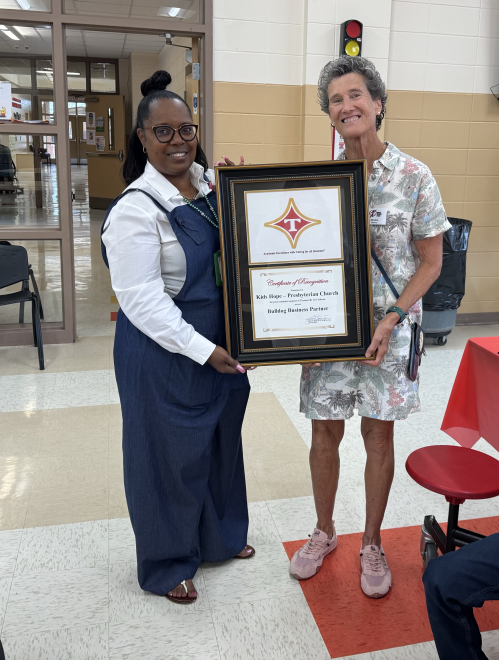It’s Octoberfest time!
Published 9:22 am Tuesday, September 29, 2020
“In the entire circle of the year there are no days so delightful as those of a fine October.” Alexander Smith.
“The end of the summer is not the end of the world. Here’s to October…” A.A. Milne.
“It must be October, the trees are falling away and showing their true colors.” Charmaine J Forde.
“Hello October, I’ve missed you” Unknown.
As September fades into the sunset, October arrives in the sunrise! Welcome October — it’s that time of the year to clean up pine cones and needles, leafy sidewalks and lawns, broken and dead branches, and start many fall projects (like building a firepit) in the landscape.
Pause for a brief moment in your landscape garden to simply enjoy the routines of nature from the color of leaves and flowers to the sights and sounds of wildlife as they scurry all around. From fireside chats in crisp evening air to marshmallow roasts and coffee or hot green tea with good friends and family, it’s Octoberfest time!
As your landscape activities begin this season, here are some planning notes as reminders that should catch your attention. If the landscape looks complete the day the project is finished, then you have either spent a lot of money for instant greenery using mature plants or you have done something wrong. This usually means that you have probably placed the plants too close together (a smorgasbord with major renovation in store in the short term) and/or too close to houses/structures. Understand container size, maximum average size at maturity, and physical placement. It is usually too expensive, financially, for most families to install all plants at mature size and shape in the landscape which would not be cost effective for many of us.
For example, use a mixture of container sizes for your project. Use #1 or 1 gal containers for filler plants (like junipers, hollies, etc.), and as you direct attention towards a focal area or specimen plant (like a Japanese maple), use a larger size such as #3 or 3 gal, #5 or 5 gal, #7 or 7 gal, etc. Dogwoods and crape myrtles in bed groupings in the lawn area should be a minimum of 5 or 7 gal. By using multiple container sizes (be consistent in container size within a species of plant) throughout the landscape, you are able to achieve an attractive landscape quickly with appreciative curb appeal.
Attention to detail and curb appeal are critical factors that take a common landscape to the next level and make it much more appealing and priceless, as well as adding value to the site. Everyone wants a landscape that is both functional and appealing. To take a novice approach to landscaping can be distracting, destructive and cost ineffective with plants to close together, to close to structures, driveways and streets, etc.
Always call before you dig. Contact your utility companies (power, cable, phone, water, sewer, etc.) and have each one mark where their service lines are located. This protects you from paying major expenses when severing a utility line that is not marked.
Understand the uses for both evergreen and deciduous plants. Evergreen plants are very effective as foundation plants around the home and deciduous plants can be used very effectively away from the foundation area throughout the lawn and landscape area. Know that pecan trees are production trees not landscape plants (if used, should be planted at significant distances from the home) and can be very troublesome in the summer (shade) and fall (leaves).
The spacing of plants is critical and every effort should be made to minimize overcrowding. In general, annual and perennial flowers should be planted on one-foot centers, daylilies on two-feet centers, and mums on three-feet centers in beds. Also, woody groundcovers should be planted three-feet centers, small shrubs planted on five- to seven-feet centers, large shrubs planted on 10-15 feet centers, and trees planted on 20-30 feet centers. The controlling factor is maximum average size (height and width). Keep your groupings in odd numbers such as three, five, seven, and nine unless a more formal setting is preferred or the bed requires more than nine plants.
Dogwoods and azaleas need some shading. White dogwoods are easier to grow than the pink or red ones (be aware of Anthracnose disease which has been spreading in recent years). Many different azaleas are available based upon color, size and bloom period. Crape myrtles are excellent choices, especially powdery mildew resistant cultivars. Indian hawthorns make good azalea substitutes in sun or shade. White Indian hawthorns are easier to grow and manage than the pink ones. Knock-out roses are great selections, except for the recent virus attacking them. Dwarf gardenias offer a pleasing fragrance with deep green foliage.
Wax myrtles make good natural hedges if space allows. Hollies and junipers make good accent and filler plants. In most situations, perennials are preferred over annuals because of longevity and ease of maintenance. Ornamental grasses and wildflowers can be used effectively. Select the male ginkgo and sweetgum, not the female. Also, the river birch and thornless honeylocust are on the favorites list.
Limit the use of red tip photinias due to potential Entomosporium leaf spot problems. With established red tips, limit pruning and sufficiently water, but not too much. Knock-out roses should be pruned for size and shape in February to March (February 14 is a good benchmark timing) before the new growth begins to develop. Limited early fall pruning is OK but do not prune late fall or early winter since the excess vegetation can serve as a protective buffer in colder weather. They can be lightly pruned throughout the growing season for shape and removal of damaged branches. Mums and pansies are very attractive plants for the fall and offer strong curb appeal. Think in terms of native and sustainable plants in the landscape.
Happy anniversary to my wonderful and beautiful wife, Jennifer, on October 2 and traveling mercies and enjoyment to my awesome and gorgeous daughter, Autumn Lee and her handsome husband Joel, as they travel eastward form California for a visit. Blessings! Goodbye September, you were a great month! Thank you for those 30 days! Welcome October! It’s Octoberfest time!
“So Christ was sacrificed once to take away the sins of many people; and He will appear a second time, not to bear sin, but to bring salvation to those who are waiting for Him.” — Hebrews 9:28.
“If anyone is ashamed of Me and My words, the Son of Man will be ashamed of him when he comes in his glory and in the glory of the Father and of the holy angels.” — Luke 9:26.
“… I am the Lord, Who exercises kindness, justice and righteousness on earth, for in these I delight,” declares the Lord. — Jeremiah 9:24.
Seagle is a Sustainability Verifier, Golf Environment Organization (Scotland), Agronomist and Horticulturalist, CSI: Seagle (Consulting Services International) LLC, Professor Emeritus and Honorary Alumnus (Abraham Baldwin Agricultural College), Distinguished Professor for Teaching and Learning (University System of Georgia) and Short Term Missionary (Heritage Church, Moultrie). Direct inquiries to csi_seagle @yahoo.com.





